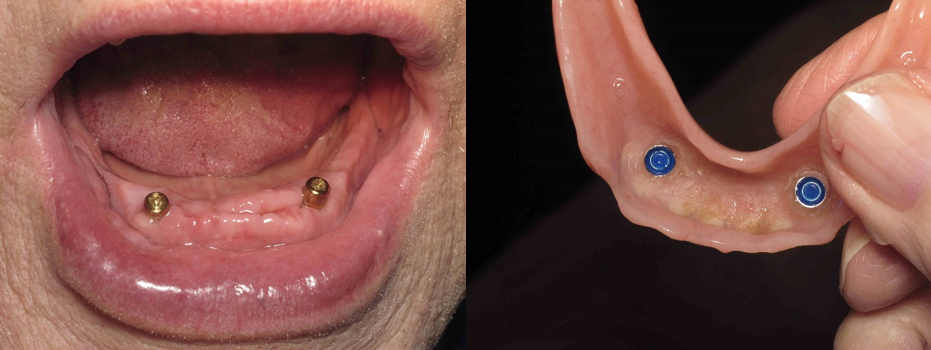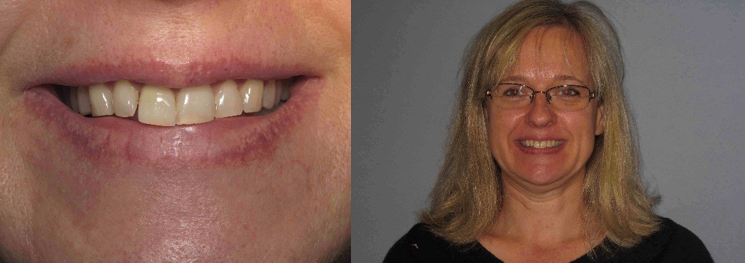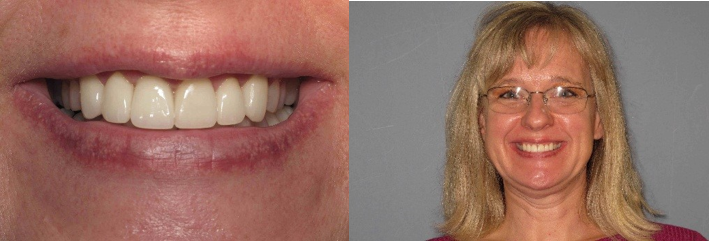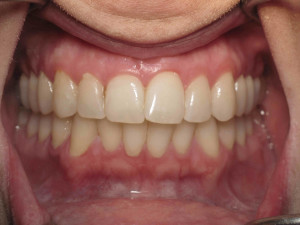By: Dr. Elizabeth Eggert
How did this start?
Ron came to us first as a new patient after being referred by his daughter who has been a long-time, loyal patient of ours. At the time of his first exam, Ron was missing a number of teeth and many of the teeth remaining were broken down. Dr. Elizabeth noted excessive wear throughout his mouth, a very uneven biting plane, and mild muscle discomfort during the muscle evaluation. Ron constantly struggled with his partial denture dislodging and moving when he moved his nose and mouth in certain directions. Ron later broke a clasp off of his partial and even after an attempted repair and multiple adjustments, Ron was not able to find a comfortable, tight fit with his partial. Dr. Elizabeth recommended Ron go through our records process so that she could delve deeper into underlying causes behind his tooth loss and accelerated wear on his teeth.
What did Ron want?
Ron noticed that his partial denture had become loose and he wanted to be able to speak without dislodging his partial. Ron was also concerned about keeping his remaining teeth healthy. Ron wanted a more even biting surface and wanted things to function better. He wanted to understand what would be a more comprehensive plan for restoring and replacing his teeth.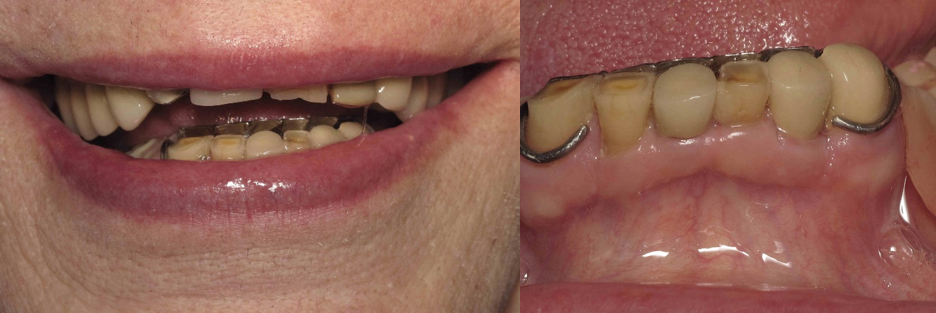
What was revealed during the records process?
Dr. Elizabeth used models, photos, and x-rays of Ron’s teeth along with our thorough muscle and joint evaluation results to present Ron with the current health of his teeth, gums, and the function of his jaw and muscles. The details of the records process revealed that the position of Ron’s teeth caused multiple interferences, so he was biting down unevenly causing the breakdown and loosening of his partial. This deterioration was negatively impacting both the aesthetics and function of his teeth. Ron needed a comprehensive plan to even out his biting plane to help distribute his biting forces more evenly.
What was involved?
Ron’s lower partial denture was loose and the remaining six natural, lower teeth had very poor prognosis. They were rather worn and tooth structure was already missing. Those teeth were also getting cavities because of how weak they were due to wear. Ron was presented with multiple restorative and replacement options. Ron decided it was best for him to have his remaining 6 lower teeth extracted and have 2 implants placed in his lower jaw to anchor a new complete denture. We were able to design a new, aesthetically pleasing, better-functioning denture for Ron that stays in place and keeps the function of his jaw and muscles working together better. Dr. Elizabeth worked with a local oral surgeon and a local dental lab to have implants strategically placed to help secure his newly designed smile.
What does Ron think?
Ron likes the look and feel of his new implant supported denture. He finds it easy to care for and is glad he went through the steps needed to get there.
